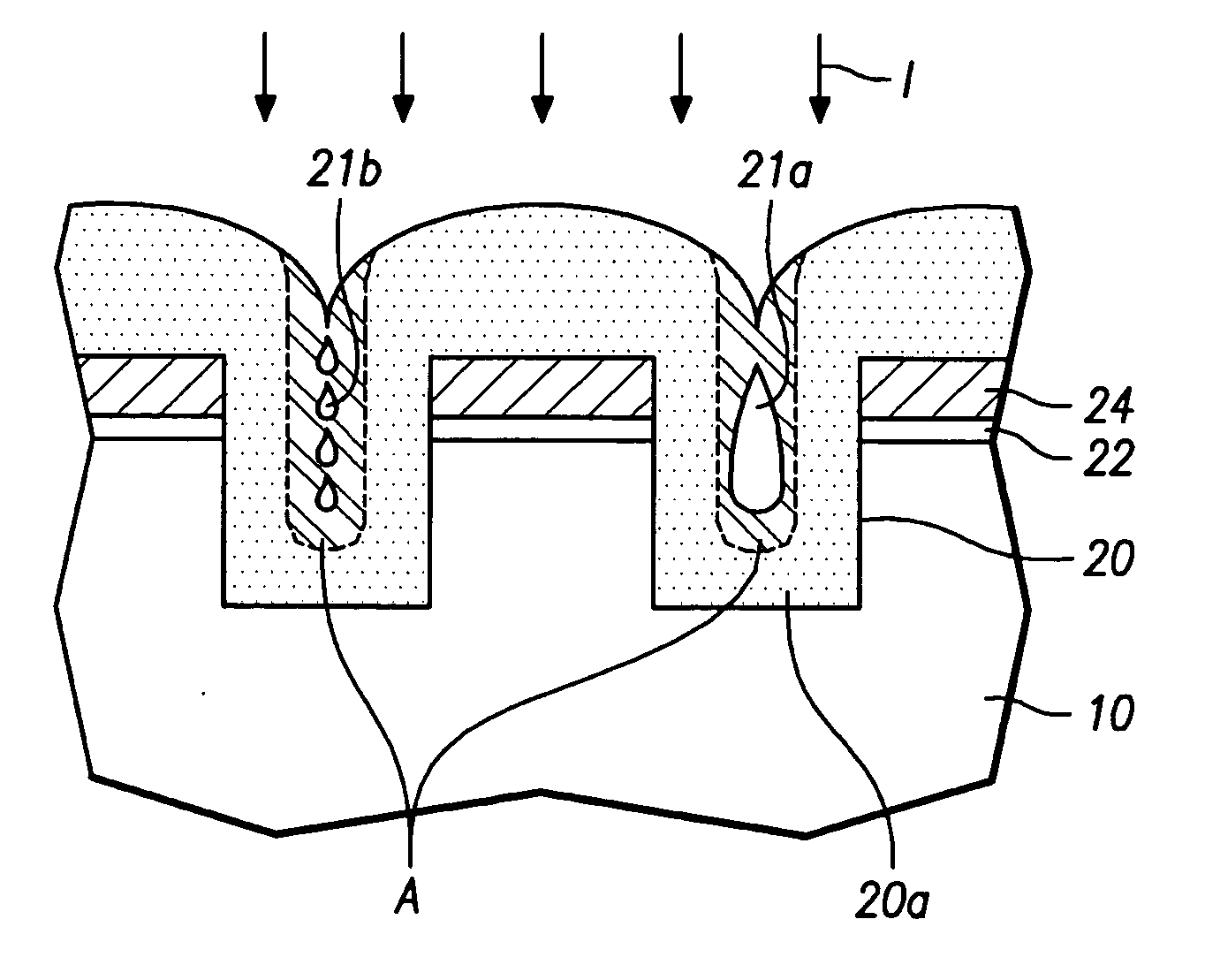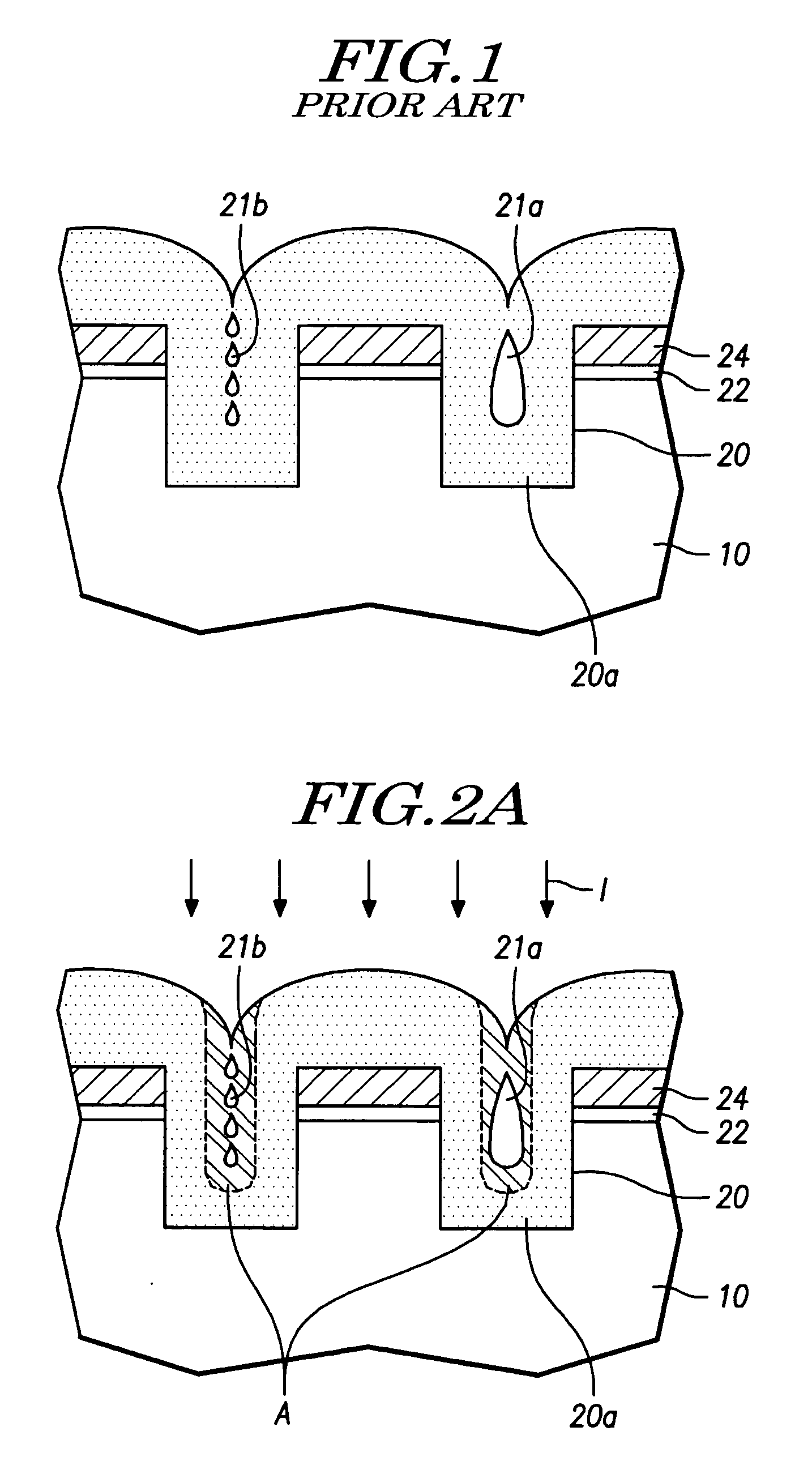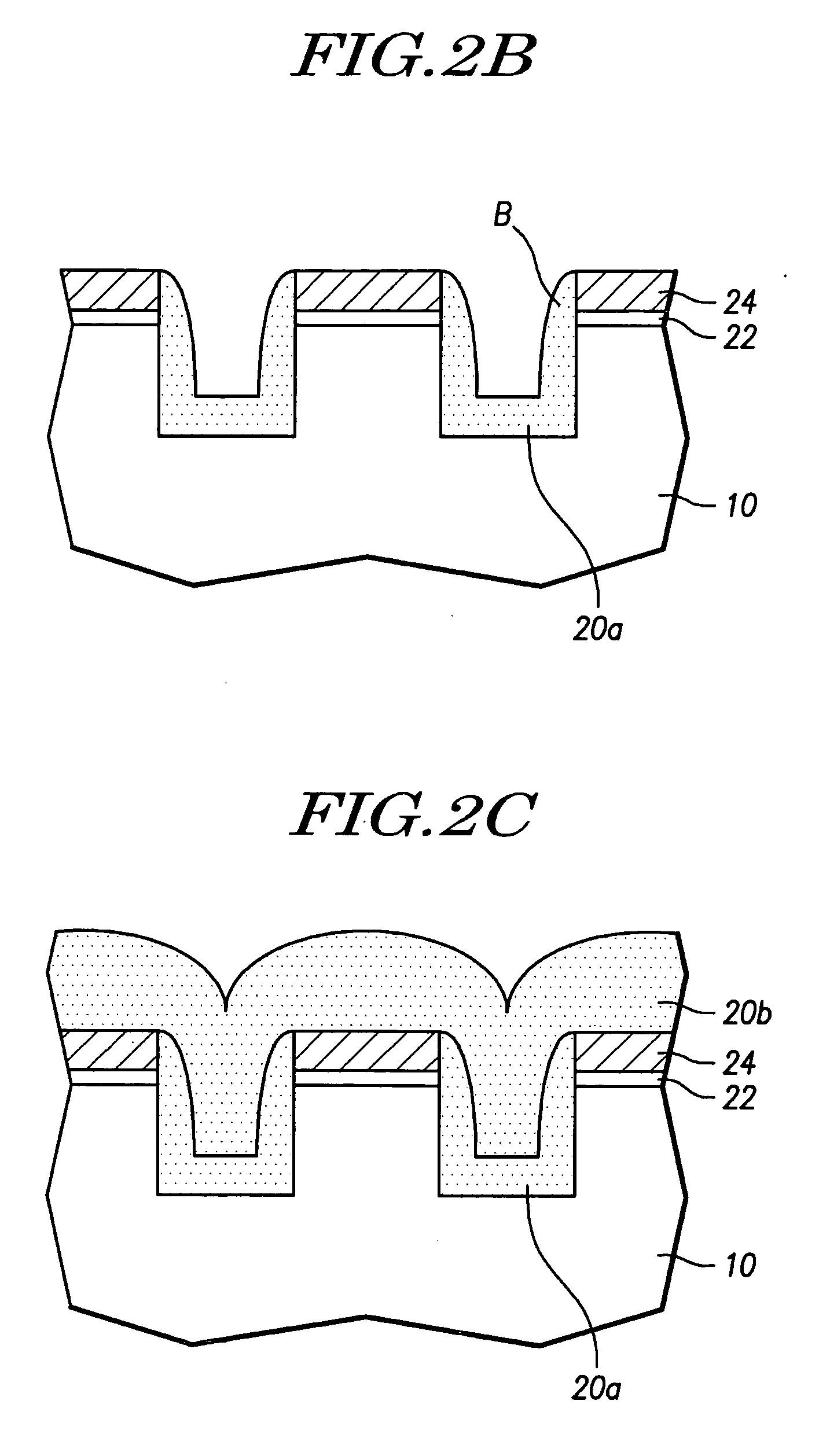Method for forming shallow trench isolation in semiconductor device
- Summary
- Abstract
- Description
- Claims
- Application Information
AI Technical Summary
Benefits of technology
Problems solved by technology
Method used
Image
Examples
Embodiment Construction
[0019]FIG. 2A shows a cross-sectional view of a shallow trench isolation structure, wherein trenches 20 are formed in a substrate 10, and then are filled with a first filling oxide 20a. Namely, a pad oxide 22 and a pad nitride 24 are formed on the substrate 10 in successive order. Then, a moat pattern (i.e., a photoresist pattern) is formed by a photolithography process. The moat pattern defines openings over regions of the substrate 10, the pad oxide 22, and the pad nitride 24 in which a trench structure 20 may be formed. Subsequently, after the pad nitride 24 and the pad oxide 22 are etched, the exposed portion of the substrate 10 is also etched in a predetermined depth so that trenches 20 are formed. Further, trenches 20 are filled with the first filling oxide 20a. Before the first filling process, a liner oxide is preferably formed on the sidewall of trench 20 by an oxidation process. After the liner oxidation, the first filling oxide 20a is formed in trenches 20 and over the en...
PUM
 Login to View More
Login to View More Abstract
Description
Claims
Application Information
 Login to View More
Login to View More - R&D Engineer
- R&D Manager
- IP Professional
- Industry Leading Data Capabilities
- Powerful AI technology
- Patent DNA Extraction
Browse by: Latest US Patents, China's latest patents, Technical Efficacy Thesaurus, Application Domain, Technology Topic, Popular Technical Reports.
© 2024 PatSnap. All rights reserved.Legal|Privacy policy|Modern Slavery Act Transparency Statement|Sitemap|About US| Contact US: help@patsnap.com










